Whether you're a college student who's short on space, a minimalist who doesn't need all the kitchen gadgets, or just a shelf cooking newbie, learn how to weigh food without a scale. We've got four tried-and-true genius hacks that will make meal prep a breeze!
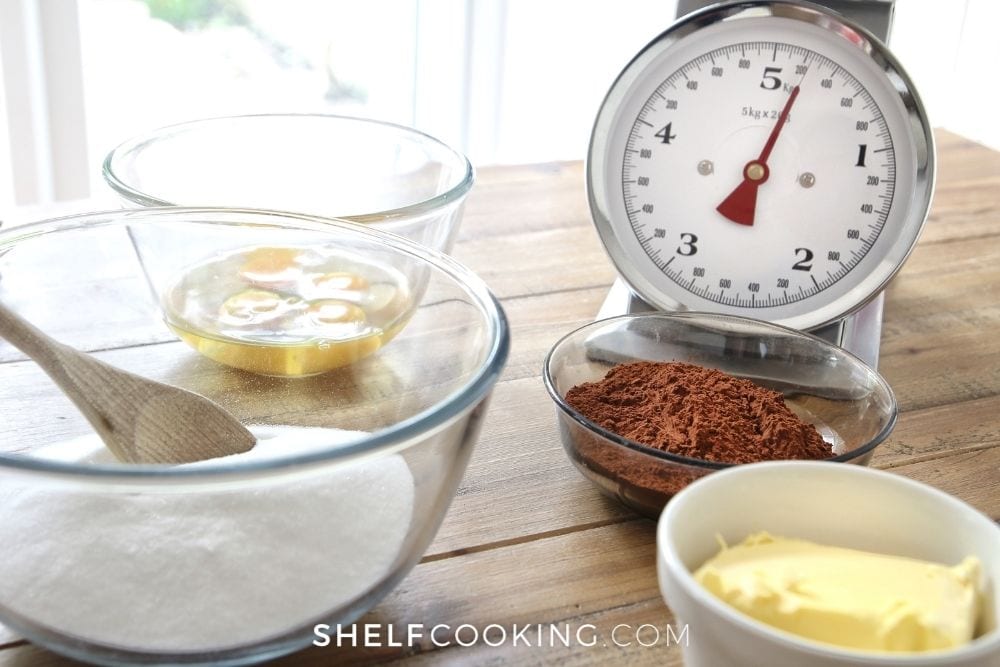
So you've got a recipe that calls for a pound of green beans but no food scale in sight. How in the world are you supposed to weigh those beans? Fair question, and one we're going to answer for you today.
*Note: When you click the links in this post, we may receive a commission at no extra cost to you.
Here's the good news: you don't need any fancy equipment to shelf cook! In fact, we don't even think you need a food scale at all. These hacks, tips, and tricks will show you how to weigh food without a scale. Score!
USE MEASURING CUPS & SPOONS TO WEIGH YOUR FOOD
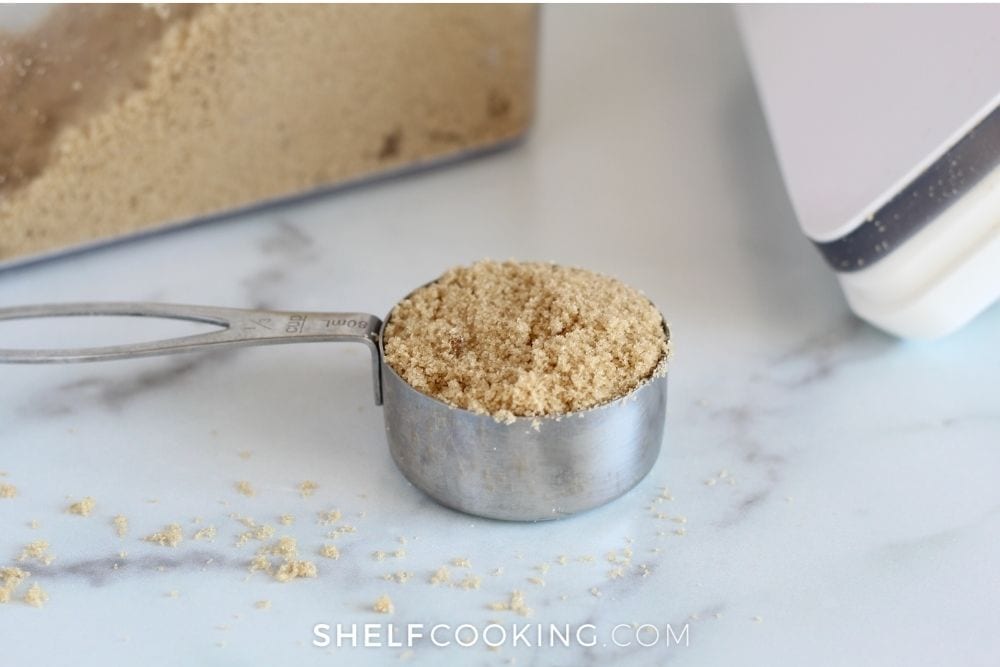
Let's go back to science class (or math, maybe?) for a few minutes. While you may not have a scale in your kitchen, we bet you have a measuring cup and some spoons. So, here's how to convert those recipe instructions and use what you've got:
- Ounces to Cups – Each cup contains eight ounces, so do the math! While the ratio isn't always perfect with cooked foods like meats, you don't need to aim for perfection! For example, if your recipe calls for one pound of shredded chicken, try using two cups.
- Ounces to Tablespoons – One fluid ounce is equal to two tablespoons. This is a super simple conversion! If your recipe calls for four ounces, use eight tablespoons.
- Ounces to Teaspoons – One fluid ounce is equal to six teaspoons. So, if you have a recipe that calls for two ounces of a certain liquid, you could use twelve teaspoons instead.
That's kinda fun, right? Okay, maybe we just love hacks, but we think so! Looking for another trick to try if you need to weigh food without a scale? This next one won't cost you a dime!
Pro Tip: If you're looking for more recipe conversion tips, be sure to grab a copy of this free kitchen conversion chart printable!
USE HOUSEHOLD OBJECTS TO GUESSTIMATE
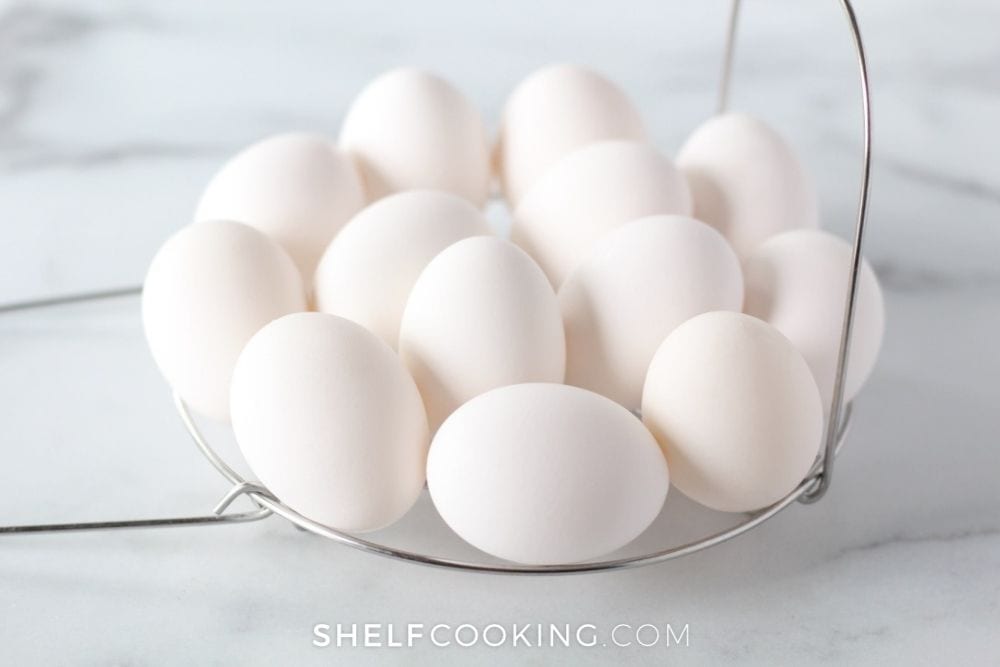
Okay, let's pretend you don't have any measuring cups or spoons handy. What can you do? Well, you can reach for what you do have and use it as a guide! Here are a few examples:
- 1/4 cup is roughly the same size as an egg
- A tennis ball is about 1/2 cup
- A softball is around 2 cups
- A three-ounce steak is around the same size as a deck of cards
- One ounce of cheese is three dice
- A baseball is around the same size as 1/2 cup of pasta or rice
- Ping pong balls are about 2 tablespoons each
Jot them down, print them off, do what ya gotta do! Those are just a few examples. If you have others to share, please stop by our Shelf Cooking Facebook group and fill us in on your best secrets!
USE YOUR HANDS TO WEIGH FOOD WITHOUT A SCALE
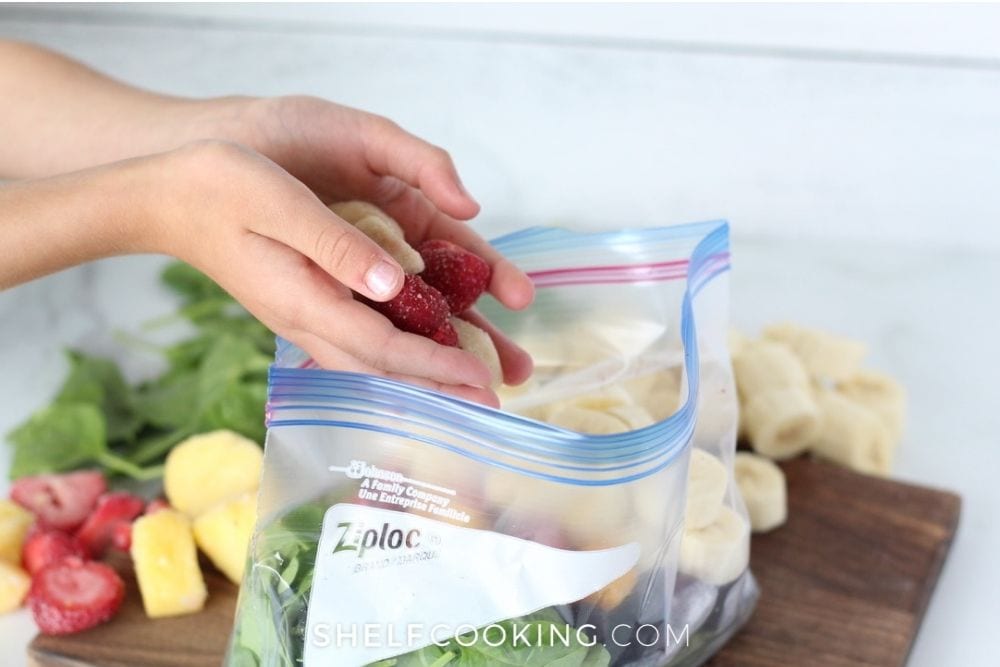
This is the ultimate Swiss Army knife kind of hack. You don't anything other than your hand to guesstimate the weight of your food! So, the next time your Airbnb doesn't have a food scale, here are some rules of thumb:
- Measuring Meat & Fish – Your palm can fit about three ounces of protein, including chicken, fish, and beef. Heads up: three ounces of meat is the normal serving size for an adult!
- How to Measure Fresh Produce – Eight ounces of veggies or fruit is usually around the same size as your balled-up fist.
- Measuring Cheese – Sorry to share this news, but one serving size of cheese is roughly the size of your thumb. That's about one ounce!
It doesn't get much easier than this method! And remember, when you're shelf cooking, you can use the recipe as a guide. Using what you have means modifying the portions, too, if you need to. So don't sweat it if you're off by an ounce or two!
USE YOUR PLATE TO WEIGH FOOD WITHOUT A SCALE
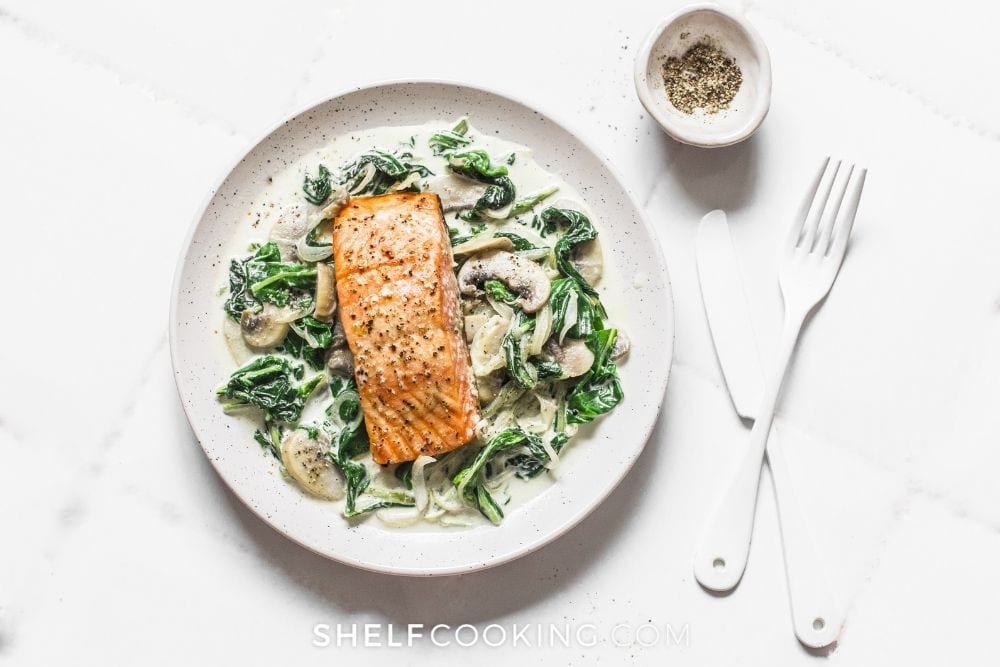
Here's another fun trick! Place your food on a normal-sized dinner plate to estimate its weight. For this example, we're using a 10.5-inch plate to guide our measurements. (That's the average.) Assuming you have a dish that's the same size, here are some guidelines to follow:
- 1/4 of a Plate – If your food takes up 1/4 of the plate, it's safe to guess it's around 1 to 1 1/2 cups or 8-12 ounces.
- 1/2 of a Plate: Does your food fill up half the plate? Then you've got 3 cups, which equals 1.5 pounds.
If you don't want to guess at it, you can also buy portion-controlled plates on Amazon. They have a set of four plates for under $25. If healthy eating is your goal, it could be worth it!
DO YOU USE A SCALE OR MEASURE WITH YOUR HEART?
If none of these options float your boat, you can buy a food scale on Amazon for around $10. Not too shabby! There are fancier options for way more, but we say go for the budget-friendly option. A scale's a scale, right?
Now we're curious! How do you weigh your food? Do you prefer to use a scale or measure with your heart? Drop a comment below and let us know!
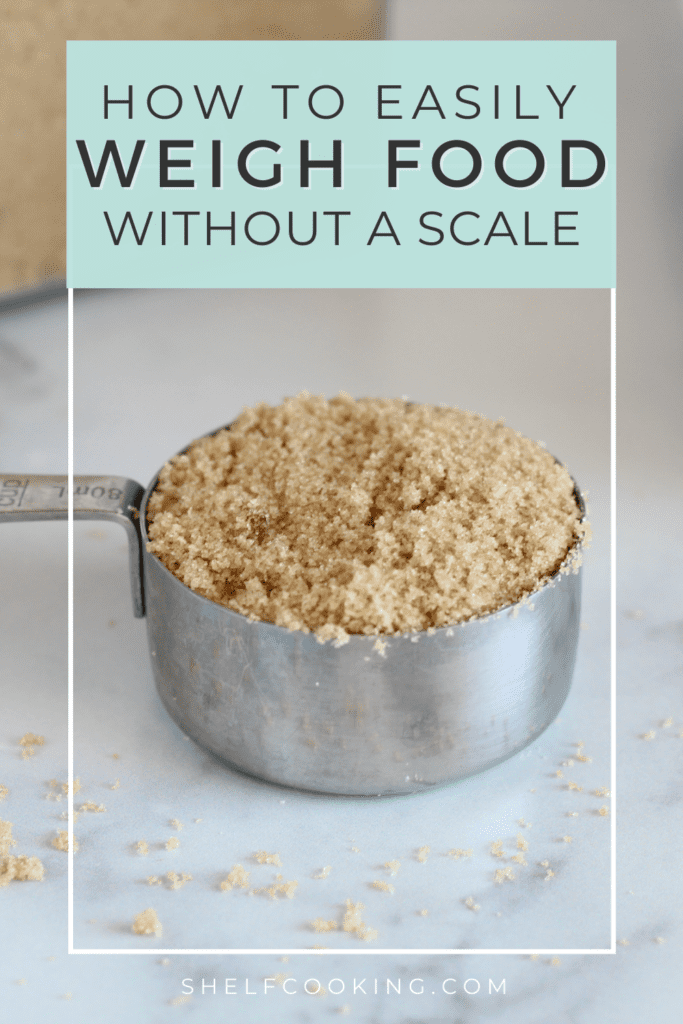
Looking for a few more clever tips and tricks?
- Learn how to store your fruit, so it lasts longer!
- We bet you didn't know you could do all of this with mayonnaise!
- Want to make the perfect hard-boiled egg? Try these tricks.
Scale away!

I was so lost with the measuring of my food with this IF I am on, Thank you for all the easier help!
A kitchen scale program that calculates the amount of food in grams. If you are thinking about how to calculate grams and kilograms of food without scales in the kitchen, you can use this program. I hope you enjoy using.
https://play.google.com/store/apps/details?id=com.friendsteam.mutfakterazisi
Still like using the good old heart, for the prefect measurement! Thanks for the “insider’s tips ” on measurement!